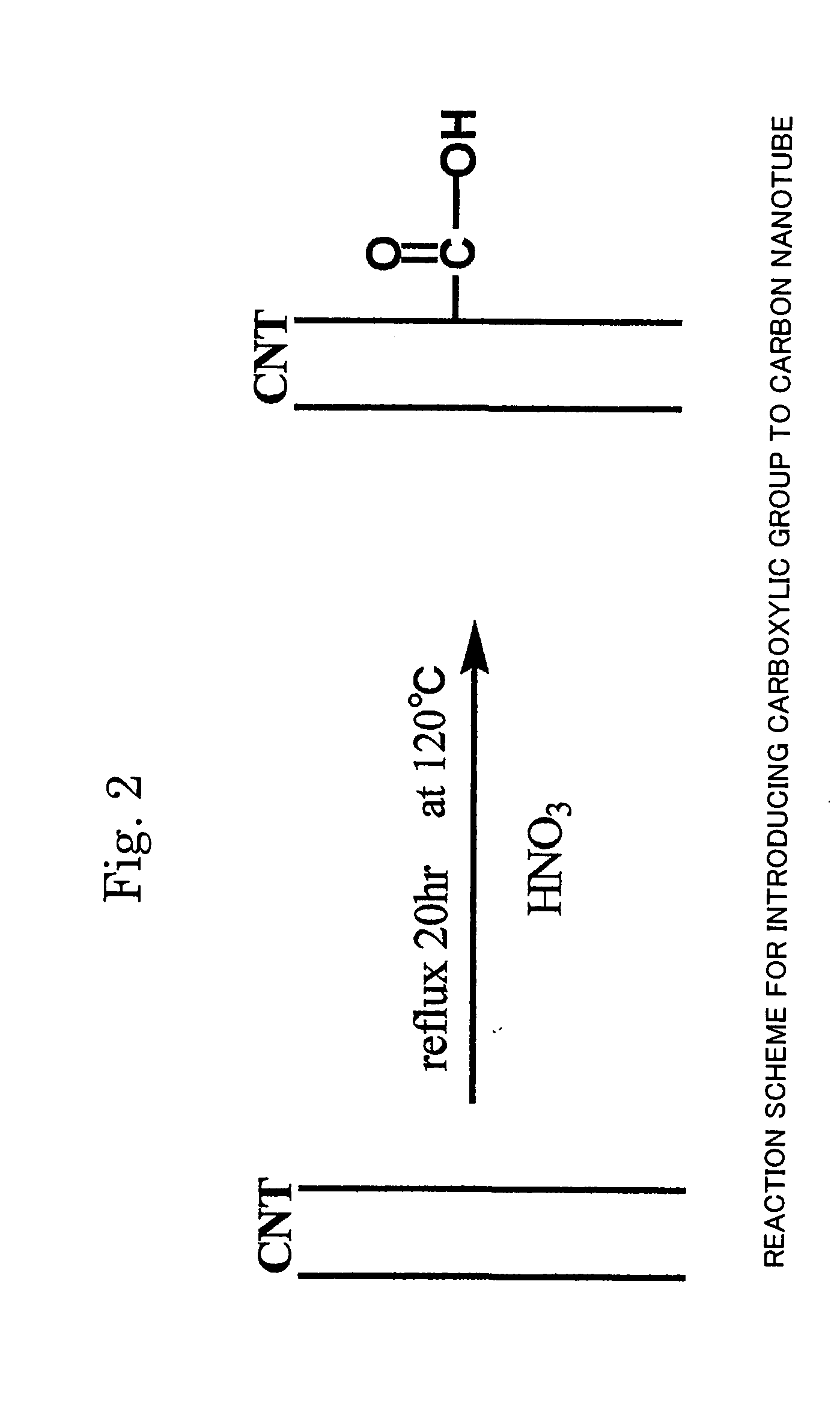Gas decomposing unit, electrode for a fuel cell, and method of manufacturing the gas decomposing unit
a fuel cell and gas decomposing technology, applied in the direction of organic compounds/hydrides/coordination complexes, cell components, physical/chemical process catalysts, etc., can solve the problems of deteriorating catalytic activity, unsatisfactory electric conductivity, and place limitations on the use of electrodes, so as to reduce the length of the cross-linked site between carbon nanotubes and stable chemical structure
- Summary
- Abstract
- Description
- Claims
- Application Information
AI Technical Summary
Benefits of technology
Problems solved by technology
Method used
Image
Examples
examples
[0176] A more specific description of the present invention is given below through Examples. However, the present invention is not limited to the following example.
[0177] A gas decomposing unit was manufactured through a flow of the method of manufacturing a gas decomposing unit shown in FIG. 1. It should be noted that reference numerals in FIG. 1 may be used in the description of this example.
(A) Applying Step
(A-1) Preparation of Cross-Linking Application Solution (Addition Step)
(1) Addition of Carboxyl Group . . . Synthesis of Carbon Nanotube Carboxylic Acid
[0178] 30 mg of multi-wall carbon nanotube powder (purity: 90%, average diameter: 30 nm, average length: 3 μm, available from Science Laboratory Inc.) were added to 20 ml of concentrated nitric acid (a 60 mass % aqueous solution, available from KANTO KAGAKU) for reflux at 120° C. for 20 hours to synthesize a carbon nanotube carboxylic acid. A reaction scheme of the above is shown in FIG. 3. In FIG. 3, a carbon nanotube ...
verification experiment
(Verification Experiment)
[0187] Platinum fine particles were deposited by ion sputtering on the nanotube structure obtained in Example 1 to prepare a gas decomposing unit. It should be noted that a platinum fine particle is generally used as a gas decomposing catalyst having an action of decomposing NOx in an exhaust gas. The surface of the resultant catalyst was observed with an electron microscope. As shown in FIG. 5, this observation confirmed that a nanotube structure layer was evenly formed on the molecular sieve surface having a complex shape. In addition, an energy dispersive X-ray analyzer confirmed that the platinum fine particles were supported on the nanotube.
[0188] According to the present invention, a gas decomposing catalyst is supported on a structured carbon nanotube structure, so that the carbon nanotube structure can be stably used as a gas decomposing unit. In addition, if the carbon nanotube structure is used as an electrode as well, excellent electric conductiv...
PUM
| Property | Measurement | Unit |
|---|---|---|
| diameter | aaaaa | aaaaa |
| Young's moduli | aaaaa | aaaaa |
| diameter | aaaaa | aaaaa |
Abstract
Description
Claims
Application Information
 Login to View More
Login to View More - R&D
- Intellectual Property
- Life Sciences
- Materials
- Tech Scout
- Unparalleled Data Quality
- Higher Quality Content
- 60% Fewer Hallucinations
Browse by: Latest US Patents, China's latest patents, Technical Efficacy Thesaurus, Application Domain, Technology Topic, Popular Technical Reports.
© 2025 PatSnap. All rights reserved.Legal|Privacy policy|Modern Slavery Act Transparency Statement|Sitemap|About US| Contact US: help@patsnap.com



